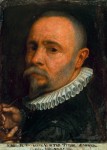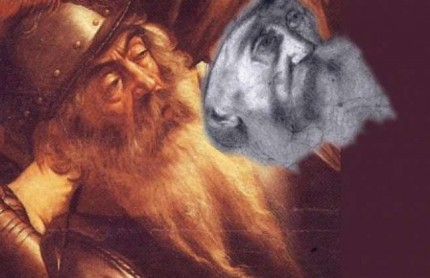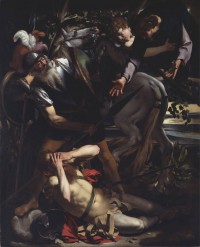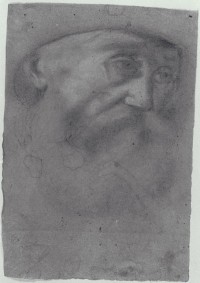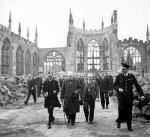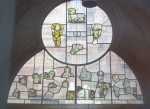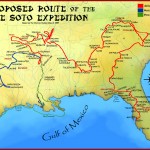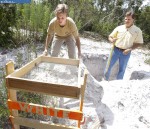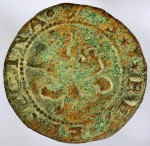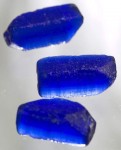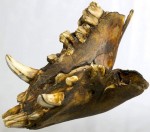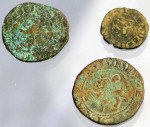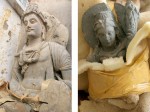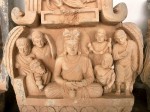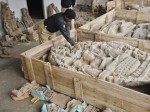 A collection of 700 rare baseball cards from a 1910 promotional series has been discovered in pristine condition in an attic in Defiance, Ohio. Restaurant owner Karl Kissner and his cousin Karla were going through their late grandfather’s attic when they came across a green cardboard box underneath a crumbling wood dollhouse. The box that had once held women’s clothing was now covered in soot. Karla opened it and saw hundreds of small baseball cards tied with twine. Some of the names — Ty Cobb, Cy Young, Honus Wagner — were immediately recognizable, but not knowing whether these particular cards were authentic or of any value, the cousins set the box aside and continued to explore the attic.
A collection of 700 rare baseball cards from a 1910 promotional series has been discovered in pristine condition in an attic in Defiance, Ohio. Restaurant owner Karl Kissner and his cousin Karla were going through their late grandfather’s attic when they came across a green cardboard box underneath a crumbling wood dollhouse. The box that had once held women’s clothing was now covered in soot. Karla opened it and saw hundreds of small baseball cards tied with twine. Some of the names — Ty Cobb, Cy Young, Honus Wagner — were immediately recognizable, but not knowing whether these particular cards were authentic or of any value, the cousins set the box aside and continued to explore the attic.
Karl researched the cards and discovered there was a chance they might be valuable. He sent eight of them to Peter Calderon at Heritage Auctions in Dallas to determine whether they were authentic; the rest he locked up in a bank vault. Calderon confirmed that they were authentic 1910 E98 series baseball cards, a set so rare few people even know about them, and that they were in exceptionally good condition. The few 1910 E98 cards that have survived are faded, stained and worn, handled roughly by the sticky fingers of pre-World War I children. Most of the Kissner cards look like they’ve never been touched at all.
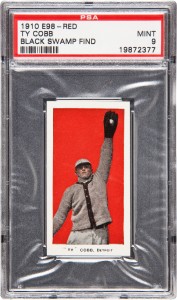 Heritage Auctions checked the context — the age of the house, how Karl’s grandfather Carl Hench might have acquired 700 1910 E98 cards — and all the pieces seemed to fit. Carl Hench was a butcher who ran a meat market in Defiance. The cards were promotional items distributed with caramels — one of the mysteries of the set is exactly which company manufactured them — so Hench probably sold the caramels in his shop, keeping some of the cards and giving away others. The family suspects he put the box of cards in the attic and forgot about it.
Heritage Auctions checked the context — the age of the house, how Karl’s grandfather Carl Hench might have acquired 700 1910 E98 cards — and all the pieces seemed to fit. Carl Hench was a butcher who ran a meat market in Defiance. The cards were promotional items distributed with caramels — one of the mysteries of the set is exactly which company manufactured them — so Hench probably sold the caramels in his shop, keeping some of the cards and giving away others. The family suspects he put the box of cards in the attic and forgot about it.
He died in 1944. After his wife died in 1976, the house was left to their daughter Jean Hench, Karl Kissner’s aunt. She was a pack rat, bless her heart, and never threw anything away. She died last October, leaving her possessions to 20 family members, including Karl and Karla. The family spent months looking through the house, finding all kinds of wonderful treasures like dresses from the turn of the century, a steamer trunk from Germany, and calendars from Carl Hench’s meat market. They finally got to the attic in February. Karla opened that fateful box on Leap Day.
 Once the probable history of the cards was pieced together, Heritage Auctions sent them to Professional Sports Authenticator to confirm the authentication and to adjudicate condition. They authenticated the cards and judged them the finest E98 series they have ever seen. The Honus Wagner (he’s called “Hans” on this series) card is a perfect 10 in condition, the first 10 ever given an E98 series card. The highest grade an E98 Ty Cobb card has gotten before this was a seven. PSA graded 16 of the Ty Cobbs in this collection a nine.
Once the probable history of the cards was pieced together, Heritage Auctions sent them to Professional Sports Authenticator to confirm the authentication and to adjudicate condition. They authenticated the cards and judged them the finest E98 series they have ever seen. The Honus Wagner (he’s called “Hans” on this series) card is a perfect 10 in condition, the first 10 ever given an E98 series card. The highest grade an E98 Ty Cobb card has gotten before this was a seven. PSA graded 16 of the Ty Cobbs in this collection a nine.
The 20 members of the family mentioned in Aunt Jean’s will split the cards up. Some of them want to keep their cards; most of them want to sell them. The 37 star cards will be auctioned at Baltimore’s Camden Yards baseball field during the National Sports Collectors Convention on August 2nd. Heritage Auctions is taking bids on a set of 27 on their website and the current bid is already at $120,000 20 days before the auction. The rest of the cards will be spread out for individual sale so they don’t flood the market and lower the value. Experts think the whole collection could prove to be worth as much as $3 million.
